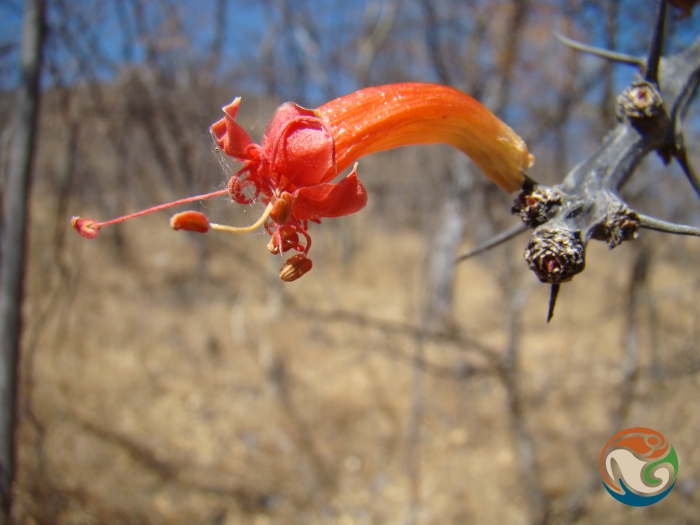Palo Santo
(Fouquieria formosa)
Palo Santo (Fouquieria formosa)
/
/

Eugenio Padilla
CC BY-SA 4.0
Image By:
Eugenio Padilla
Recorded By:
Copyright:
CC BY-SA 4.0
Copyright Notice:
Photo by: Eugenio Padilla | License Type: CC BY-SA 4.0 | License URL: http://creativecommons.org/licenses/by-sa/4.0/ | Rights Holder: Eugenio Padilla | Publisher: iNaturalist | Date Created: 2012-01-16T01:05:10-08:00 |

































Estimated Native Range
Summary
Fouquieria formosa, commonly known as Palo Santo, Rabo de Iguana, or Rosalillo, is a small deciduous tree or large shrub native to the tropical deciduous forests and arid tropical scrublands of central and southern Mexico, particularly thriving on rocky alluvial slopes and valleys at elevations ranging from 330 to 7,900 feet. It can grow up to 26 feet tall and is characterized by its dichotomously branched stems with spines. The plant is notable for its deep orange-red to yellow-orange tubular flowers, which bloom from late winter to early spring and attract pollinators such as hummingbirds.
Fouquieria formosa is appreciated for its striking floral display and is used in xeriscaping, ornamental gardens, and as a specimen plant in regions with a suitable climate. It requires minimal maintenance once established and is drought-tolerant, making it ideal for water-wise gardens. This species prefers well-drained soils, tolerates poor soil conditions, and thrives in full sun to partial shade. While not commonly available in cultivation, it can be propagated from seed or cuttings. Gardeners should be aware that the spines can be sharp and may require careful placement in the landscape to avoid injury.CC BY-SA 4.0
Fouquieria formosa is appreciated for its striking floral display and is used in xeriscaping, ornamental gardens, and as a specimen plant in regions with a suitable climate. It requires minimal maintenance once established and is drought-tolerant, making it ideal for water-wise gardens. This species prefers well-drained soils, tolerates poor soil conditions, and thrives in full sun to partial shade. While not commonly available in cultivation, it can be propagated from seed or cuttings. Gardeners should be aware that the spines can be sharp and may require careful placement in the landscape to avoid injury.CC BY-SA 4.0
Plant Description
- Plant Type: Shrub
- Height: 12-15 feet
- Width: 6-12 feet
- Growth Rate: Moderate
- Flower Color: Orange, Red
- Flowering Season: Spring
- Leaf Retention: Deciduous
Growth Requirements
- Sun: Full Sun
- Water: Low
- Drainage: Fast
Common Uses
Drought Tolerant, Low Maintenance, Rock Garden
Natural Habitat
Tropical deciduous forests and arid tropical scrublands
Other Names
Common Names: Smooth Ocotillo, Coahuila Ocotillo
Scientific Names: , Fouquieria formosa, Echeveria spicata, Philetaeria horrida,
GBIF Accepted Name: